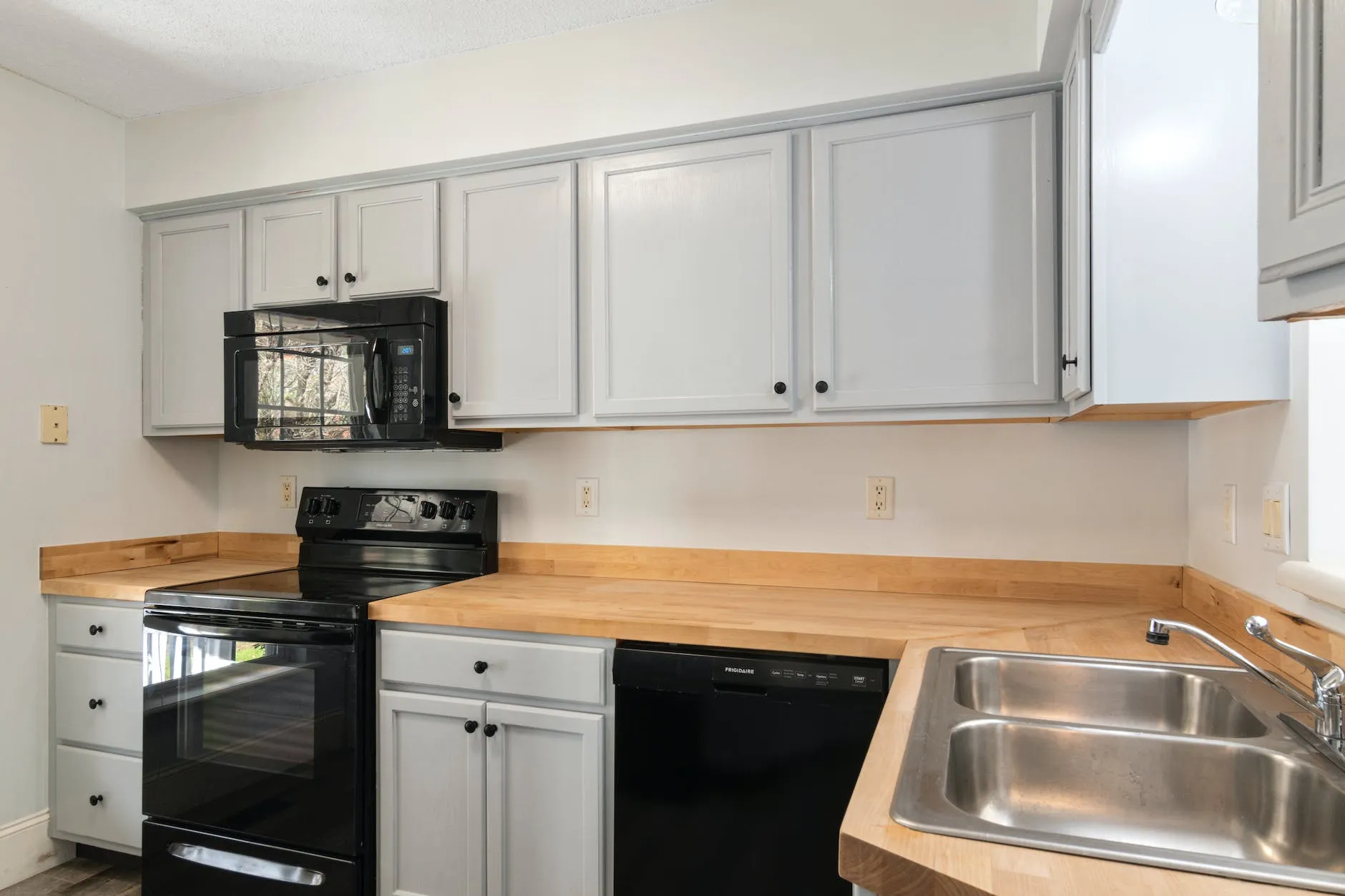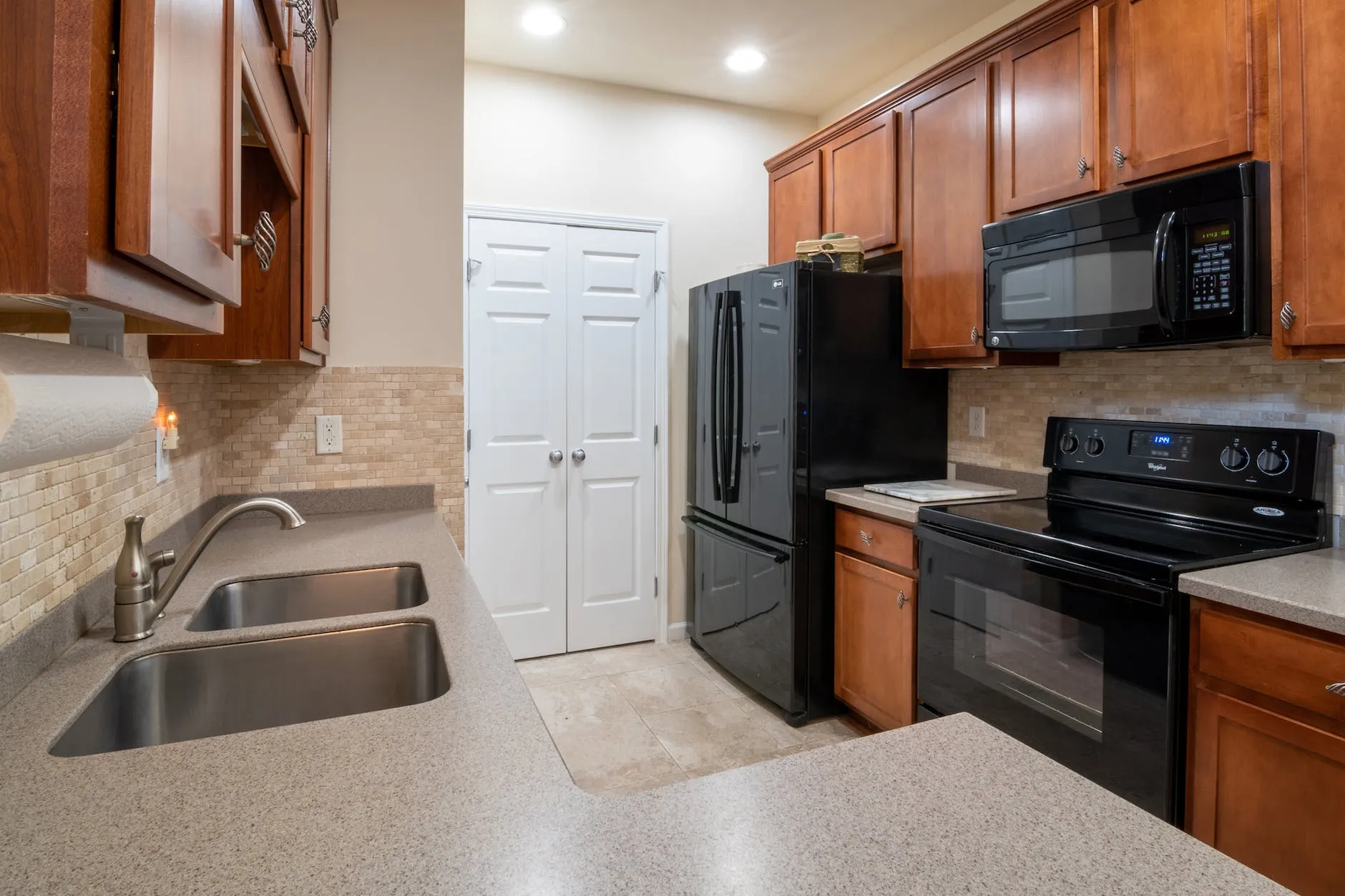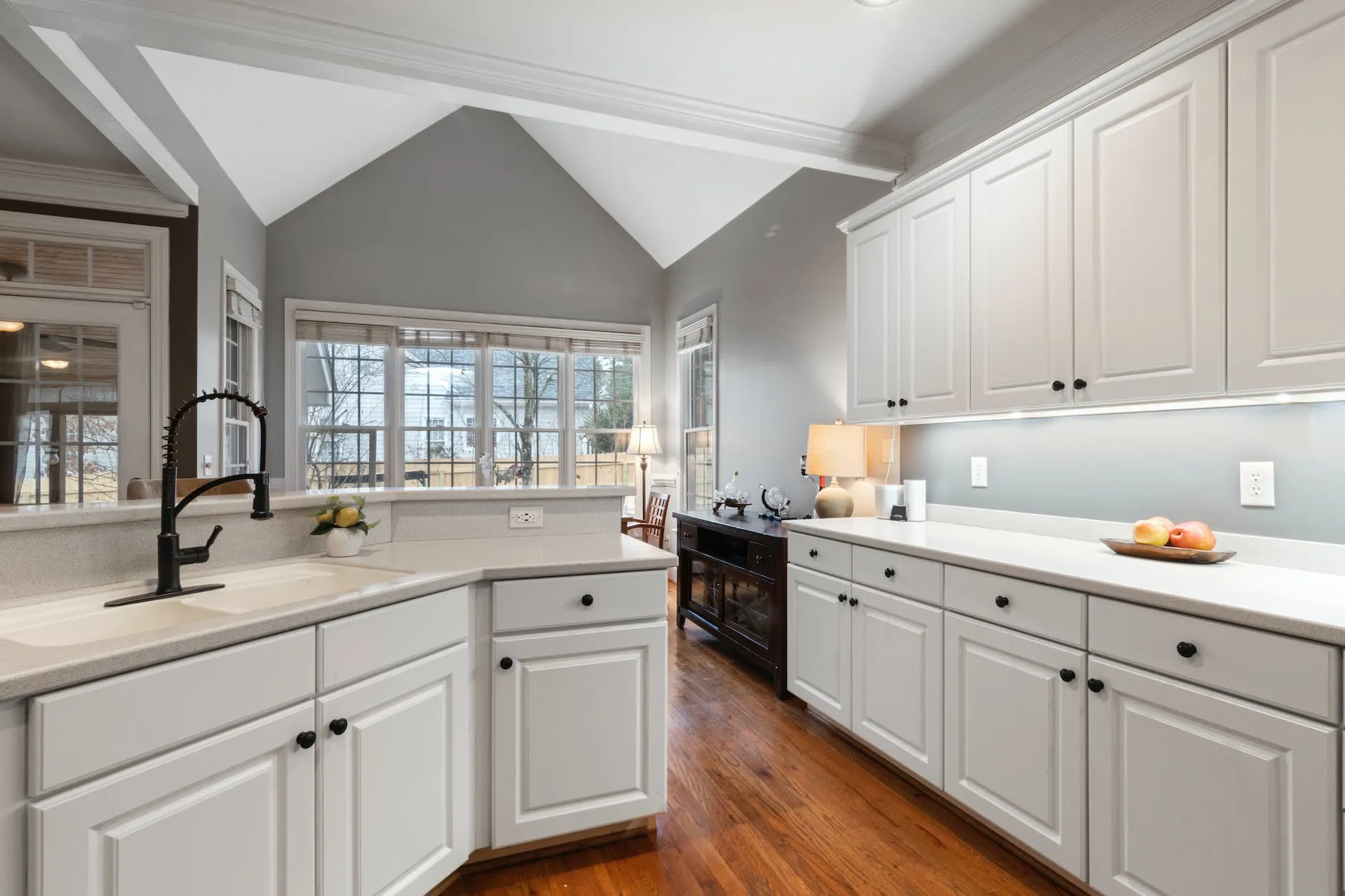When it comes to kitchen appliances, there are a lot of options out there. And which one is the best for your needs? In this blog post, we will compare and contrast two common kitchen appliances: the bar faucet and the kitchen faucet. We will discuss the pros and cons of each, as well as which one is likely better for your individual kitchen.
So, whether you’re looking for a new water source or just need some clarification on what to buy, read on to learn more about bar faucet vs kitchen faucet.
Bar Faucet Vs. Kitchen Faucet
Both types of faucets have pros and cons, so deciding which is best for your kitchen is important. Bar faucets are typically more affordable than kitchen faucets but may not be as versatile. They can be difficult to clean and require more effort to operate.
Kitchen faucets are more durable and easier to use but may not look as elegant as bar faucets. Ultimately, deciding what kind of faucet is right for your kitchen is up to you.

Benefits of a Bar Faucet
A bar faucet is a newer option than kitchen faucets, offerings additional benefits.
A bar faucet is typically more stylish than a kitchen faucet and comes in a wider variety of materials, colors, and finishes. They are also often taller and have more stream options.
One benefit of a bar faucet is that it allows you to rinse larger pots and pans with less water. This is because the bar stream from the faucet divides into many small streams as it travels down the drain. This means that less water is needed to clean the surface of the pot or pan. Additionally, a bar faucet can be used to dispense frothy soap bubbles when washing dishes.
Another advantage of a bar faucet is that it’s easier to use than a traditional kitchen faucet. You don’t have to lift up the spout to get the water streaming out; you simply reach down and grab hold of the spout handle. This makes filling large pots or pans easier with water without spilling any over sides.
Overall, there are many benefits to choosing a bar faucet over a kitchen faucet for your home kitchen. Whether you’re looking for an easier way to clean large pots and pans or want extra foam when washing dishes, a bar faucet is definitely an option worth considering.
Benefits of a Kitchen Faucet
A kitchen faucet is a traditional fixture in many homes. It offers convenience for filling pots and pans and can be used to wash dishes. They come in various styles and materials, but what are the benefits of each?
Kitchen faucets come in two main types: pull-down and spray.
Pull-down faucets are the most common type and work just like the ones you use at home: you pull down on the handle to turn it on, then pull it back up to stop the water flow.
The spray option is useful if you want to create a misty shower or pour water into a pot without getting it all over yourself.
There are several factors to consider when choosing which type of kitchen faucet to buy: your needs, your budget, your style, and your home’s layout. Ultimately, the decision depends on what’s best for you and your kitchen.
Comparison between Bar and Kitchen Faucets
The main difference between the two is that bar faucets are typically lower to the counter, while kitchen faucets are typically higher up. This can affect which sink you use most often and how much water you need to reach specific spots in the sink. Bar faucets may also be easier to clean if they have a hose attachment.
So, which is better for your kitchen: the bar faucet or the kitchen faucet? The answer depends on your needs and preferences.
Things to Consider Before Choosing the Right Kitchen Faucet for Your Home
When your kitchen requires a new faucet, deciding which option is best for you can be difficult. Before making your decision, there are a few things to consider, including the type of sink you have and how much space you have available.
So, before you make your purchase, here are a few things to keep in mind:
- The height of your sink: The taller the sink, the higher the faucet should be. This is especially important if you have limited counter space or want to reach high up on your sink while washing dishes.
- The type of water source: A bar faucet will work best if you have an outside water line. These types of faucets attach directly to the spigot and dispense water straight into your sink. A kitchen faucet will work better if you have an inside water line. These types of faucets come with a hose attachment that allows you to spray water into various areas of your kitchen.
- Your budget: When it comes to choosing a kitchen faucet, there are a variety of price points available. Whether you’re looking for a basic model or something more ornate, there’s sure to be something on sale that fits your needs.
If you have an under mount sink, a bar faucet is likely the best option for you. This faucet style has a long neck that reaches into the sink basin. They’re perfect for larger sinks and kitchens with more counter space.
On the other hand, a kitchen faucet might be better suited for your kitchen with a pull-down drain or limited counter space. These faucets have shorter necks connecting to the spout on the side of your sink. This means they can fit more easily into smaller spaces and don’t require as much space to operate.
Before making your purchase, it’s important to consider all of these factors so that you pick the right kitchen faucet for your home.

How Tall Should A Bar Faucet Be?
There are a few things to consider when selecting the right height for your faucet. For example, opting for a shorter faucet might be ideal if you have a low countertop or kitchen island. Conversely, if your countertop or island is high enough that you would prefer a taller faucet, go with one that is at least 18 inches tall.
The most important consideration is the flow rate of water. If you have a high-volume sink, you’ll want a taller faucet to ensure that water flows quickly and efficiently.
Other factors to consider include the reach of the spout and how easy it is to use. A higher faucet will be easier to fill your mug than a lower one, while a faucet with a long reach is perfect if you have limited counter space.
Finally, make sure that the faucet matches your bathroom’s style and color palette. A bolder design will look great in an industrial setting, while a more subtle option will look perfect in a contemporary bathroom.
How High Should Faucet Be Above Kitchen Sink?
When it comes to faucets, there is no one right answer. Some people prefer a high faucet that streams water powerfully, while others may prefer a low one despite gentle splashes. The faucet height above the kitchen sink can be customized to fit your personal style.
Higher faucets allow water to flow more easily and don’t require you to reach as high. However, they can also be more expensive.
Generally, high faucets tend to start 8-10 inches above the kitchen sink. On the other hand, low faucets reach 3-8 inches above the sink. Ultimately, deciding what height works best for you and your kitchen is up to you.
Distance Between Kitchen Sink and Faucet
There’s no right or wrong answer when it comes to choosing a kitchen faucet, as the style and design of your sink will play a large role in which option is best for you. However, if you’re looking for an easy way to know how far apart these two pieces should be, here’s a rough approximation: A kitchen bar faucet is typically about 2-3 inches away from the sink, while the kitchen faucets sit closer to 4-5 inches away.
Maintenance Suggestions for Both Types of Faucets
If you’re considering a new kitchen faucet, there are a few maintenance tips to keep in mind. First, be sure to unplug your faucet if you’re not using it so that it doesn’t draw unnecessary power. Second, clean your faucet by running water through it occasionally and using a hose to wash the base and spray the head. Finally, make sure to tighten your faucet’s water supply connection leaks periodically.
Conclusion
Whether you are looking for a modern update to your kitchen or just want something that is as aesthetically pleasing, a bar faucet might be a better option than a traditional one. They look great, but they have all the needed features and more, making them perfect for any busy cook. If you are unsure which one to choose, our article should help make your decision easier.
Frequently Asked Questions:
What’s the difference between a bar faucet and a kitchen faucet?
Depending on how the water flow is controlled, there’s a big difference between a bar faucet and a kitchen faucet. A bar faucet is typically used in bars and pubs, where the customer can access the water supply directly. It’s wider with a shorter handle and is designed for general use in the kitchen. Kitchen faucets, on the other hand, are more common in homes and restaurants and typically taller with a longer handle, and are designed for use with pots and pans. These types of faucets usually have two hoses – one that goes into the sink and one that goes into the drain – so that you can wash your hands without having to go all the way over to the sink. However, bar faucets are typically cheaper than kitchen faucets.
Can you use a bar faucet for a kitchen sink?
Many homeowners opt to use a bar faucet for their kitchen sink because it is easier to reach and less intrusive than a traditional faucet. However, some considerations must be made before using a bar faucet in the kitchen. First, ensure the sink is large enough to accommodate the bar. Second, make sure the hose attachment is suitable for use with a bar faucet. Third, be aware that the bar may not fit snugly into some sinkholes, so be prepared to adjust the angle of the stem or use a support bracket. Finally, keep in mind that a regular kitchen basin may not be able to hold up under the weight of a full-size bar faucet, so consider adding an extra drainboard if necessary.
What does a bar faucet mean?
A bar faucet is a type of faucet that has a raised or hinged basin in the center, with a spout extending from the side. They are often used in kitchens because they’re easy to use and offer high control over how much water goes into the sink. On the other hand, a kitchen faucet typically has two handles on the same side of the spout, making it easier to hold. They also typically have a wider mouth, making them better for washing dishes and large pots.
What is the difference between a bar sink and a kitchen sink?
A kitchen sink is typically wider than a bar sink, making it more versatile for use in a kitchen. A bar sink is typically shorter and has fewer curves, making it better suited for use in a bathroom or other small space. Additionally, a kitchen sink has a drainboard, which is a raised section on the side that catches water and dishes so they can be easily drained. A bar sink does not have a drainboard, so dishes must be placed on the countertop or in the sink’s basin.
